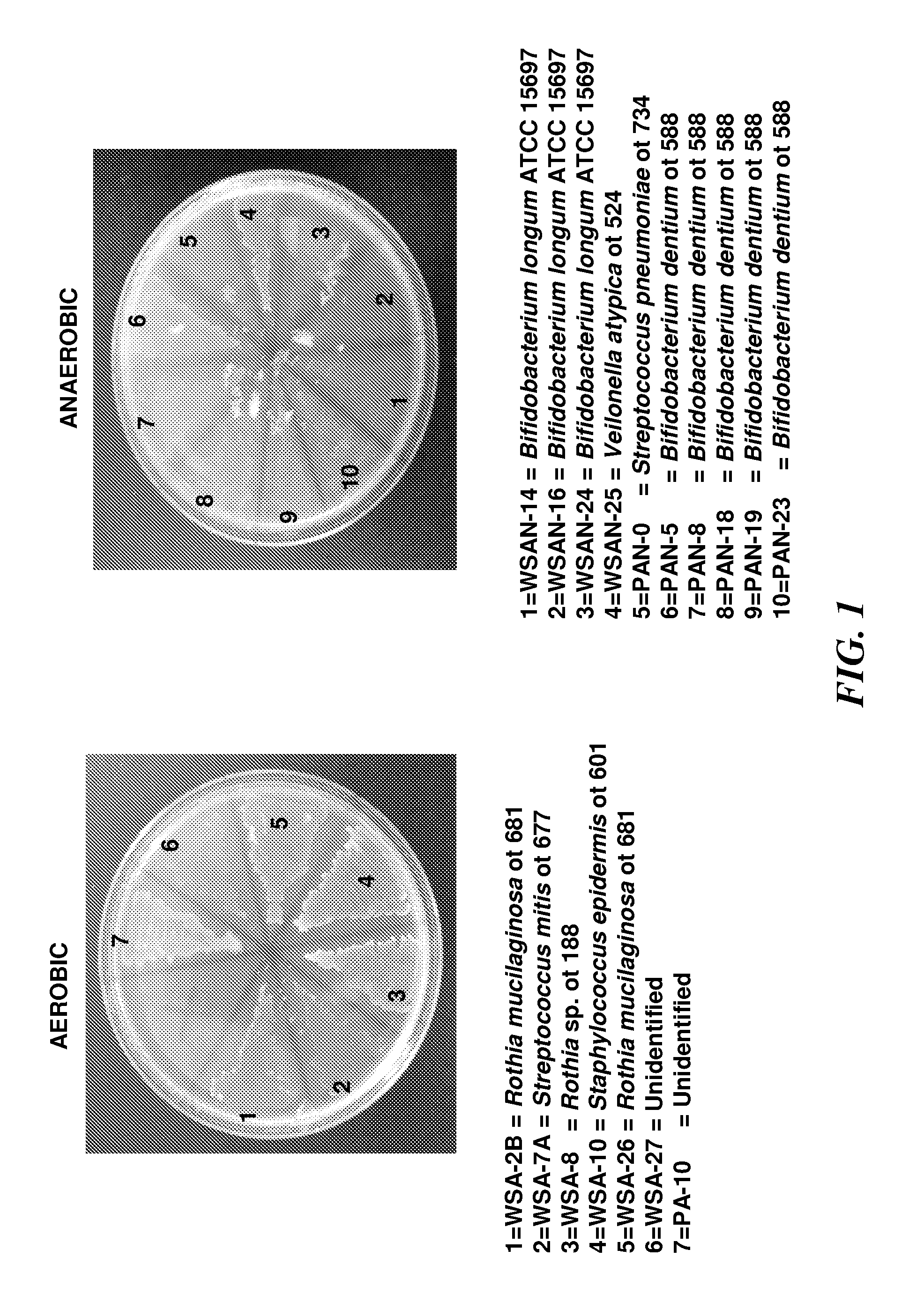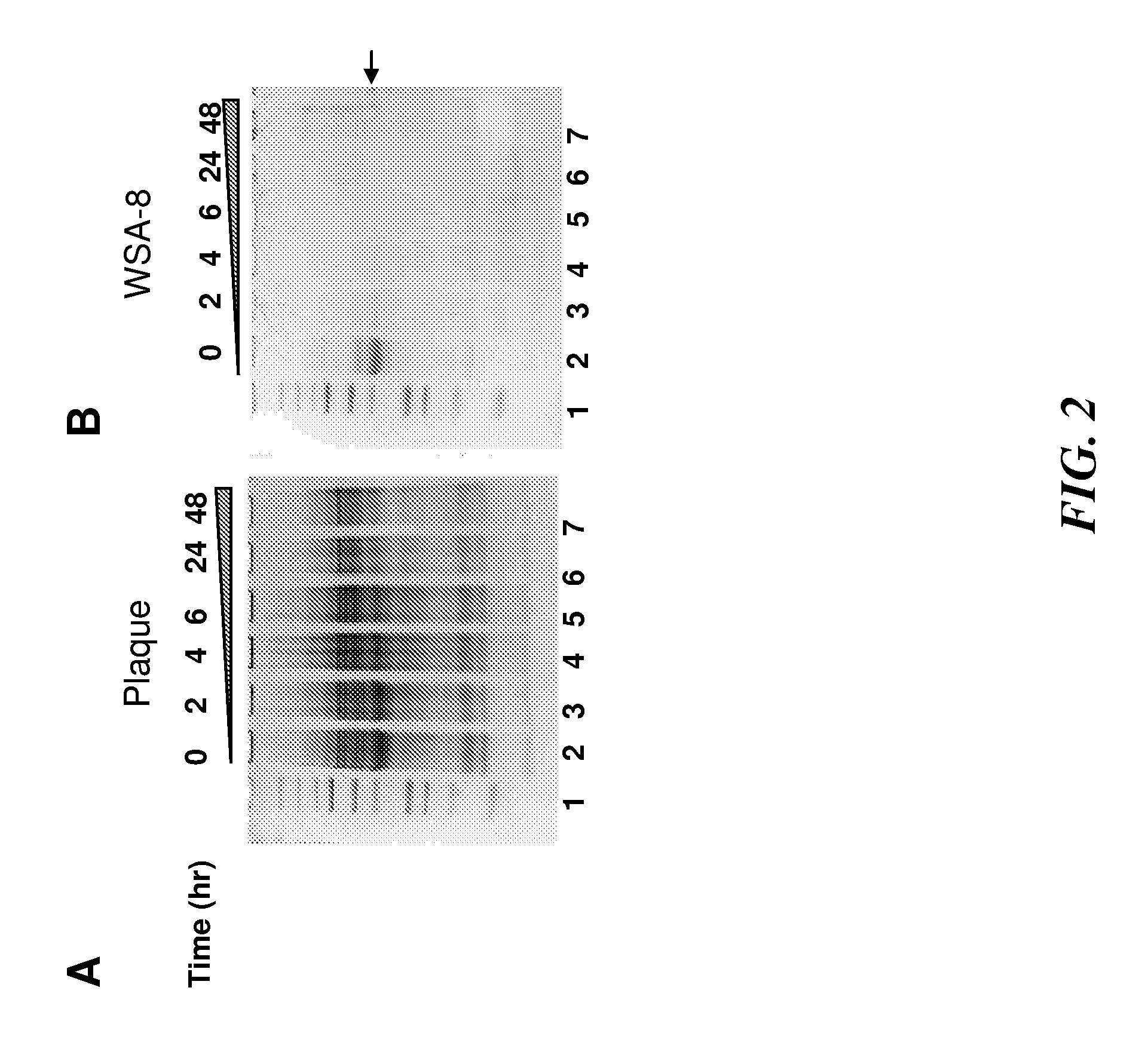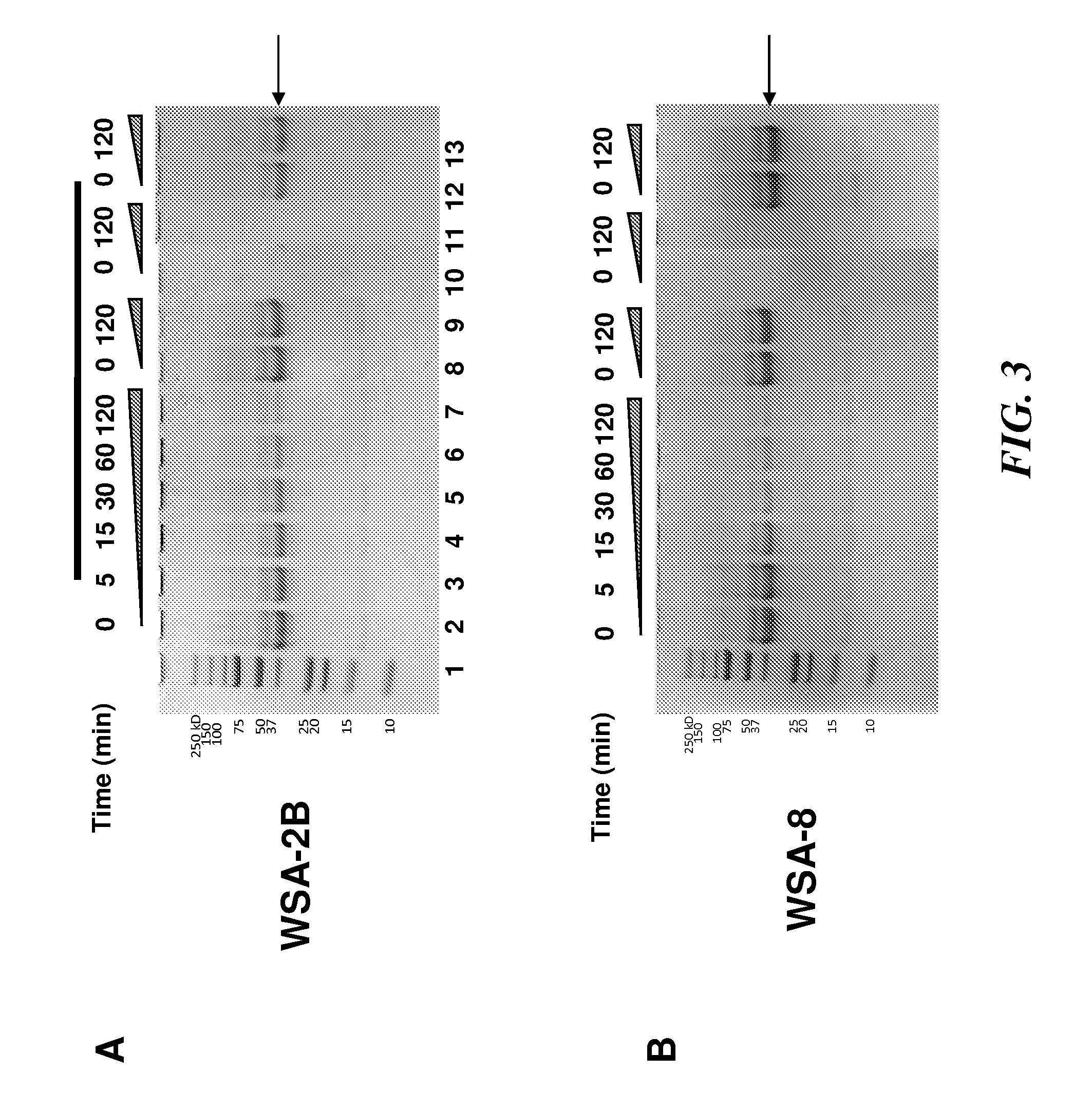Rothia species glutamine endopeptidases and use thereof
a technology of rothia species and endopeptides, which is applied in the field of rothia species glutamine endopeptidases, can solve the problems of generalized gastro-intestinal disease symptoms, erroneous diagnosis of eczema, general feeling of sickness and fatigue, etc., and achieves the effect of increasing enzyme activity, potency and stability
- Summary
- Abstract
- Description
- Claims
- Application Information
AI Technical Summary
Benefits of technology
Problems solved by technology
Method used
Image
Examples
example 1
[0320]Some types of prolyl glutamine endopeptidase isolated from wheat, designate EP-B2 have been used in studies to decrease the propensity of gluten-containing wheat products to aggravate coeliac disease (Vora et al., Biotechnol Bioeng. 2007 Sep. 1; 98(1):177-85 and Gass et al., Gastroenterology. 2007 August; 133(2):472-80). The inventors have discovered that human whole saliva and dental plaque contain enzymatic activities that can cleave the Xaa-Pro-Gln (-XPQ-) bond after Gln, where Xaa is any amino acid, Pro is proline and Gln is glutamine (Helmerhorst et al., J. Biol. Chem. 29:19957-66, 2008). This tripeptide is also particularly abundant in known celiac T-cell gluten epitopes. Based on this, the inventors tested to determine whether the saliva-associated enzymes can degrade gluten / gliadins. This was confirmed experimentally by showing that plaque bacterial suspensions cleave gliadin. To isolate the microorganisms producing the gliadin-degrading enzymes, dental plaque was cult...
example 2
[0324]Selection and 16S RNA speciation of gluten-degrading oral bacteria—Gluten is a collection of glutenins and gliadins of varying lengths and compositions. All gluten proteins are rich in glutamine and proline residues (Wieser, 2007, Food Microbial. 24:115-9). Experiments were conducted to explore if gluten-limited agar (GA) is suitable to select for oral microorganismsms capable of metabolizing gluten. Bacteria from dental plaque and whole saliva were plated on GA and subcultured on Brucella agar to purity. A total of 7 aerobic strains and 10 anaerobic strains were harvested applying the selective plating strategy (FIG. 1). The strains did not grow on control agar formulations that contained all the ingredients of the GA agar except wheat gluten (data not shown). The strains harvested from the oral specimens were unique in terms of their capacity to utilize gluten as a substrate. The 17 strains were identified by 16S rRNA analysis. The RNA typing results revealed that some of th...
PUM
 Login to View More
Login to View More Abstract
Description
Claims
Application Information
 Login to View More
Login to View More - R&D
- Intellectual Property
- Life Sciences
- Materials
- Tech Scout
- Unparalleled Data Quality
- Higher Quality Content
- 60% Fewer Hallucinations
Browse by: Latest US Patents, China's latest patents, Technical Efficacy Thesaurus, Application Domain, Technology Topic, Popular Technical Reports.
© 2025 PatSnap. All rights reserved.Legal|Privacy policy|Modern Slavery Act Transparency Statement|Sitemap|About US| Contact US: help@patsnap.com



